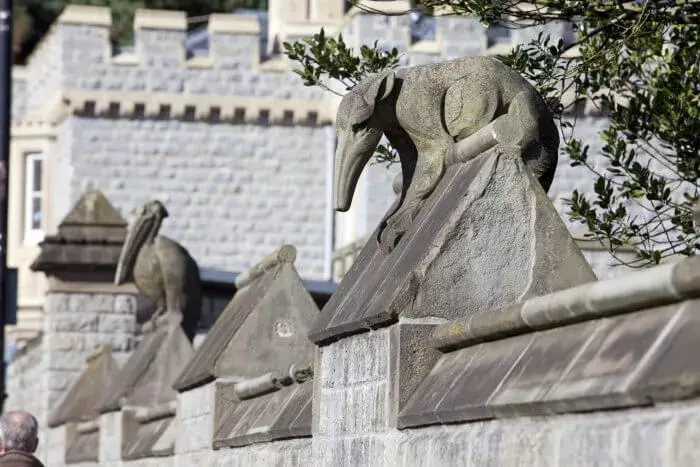The Animal Wall

- The Animal Wall is one of Cardiff’s most unique and beloved landmarks, located along Castle Street, near Cardiff Castle. This striking Victorian-era stone wall, adorned with intricately carved animal sculptures, has captured the imagination of locals and visitors alike for well over a century. Originally designed in 1880 by architect William Burges—a key figure in the Gothic Revival movement—the wall was commissioned by John Crichton-Stuart, the 3rd Marquess of Bute, as part of the ambitious renovations to Cardiff Castle. However, the sculptures were not added until 1890, shortly after Burges’ death, and were completed by sculptor Thomas Nicholls.
- The wall originally featured nine lifelike animal sculptures, each carefully carved to appear as though they were peering over the top of the stone structure. These included a lioness, a lynx, a seal, a bear, and a pair of apes, among others. The detailed craftsmanship of each sculpture, with expressive faces and realistic postures, made them an instant attraction. However, in 1922, the Animal Wall was moved slightly westward to accommodate road expansions, and at this time, six additional animals were added, bringing the total to fifteen. These later additions, though stylistically slightly different, blended seamlessly with the original figures.
- Over the decades, the Animal Wall has become an iconic part of Cardiff’s cityscape, inspiring local legends and even featuring in Welsh literature. One of the most famous myths surrounding the wall suggests that the animals come to life at night and roam the city, a story that has enchanted generations of children. Due to weathering and pollution, the sculptures suffered wear and tear over the years, but in the late 20th and early 21st centuries, extensive restoration efforts helped to preserve their original charm. Today, the sculptures are well-maintained, with their intricate details still clearly visible to passersby.
- The Animal Wall remains a must-visit spot for those exploring Cardiff, offering a whimsical and artistic glimpse into the city’s Victorian heritage. Located just outside Bute Park, near the bustling city center, it is an ideal stop for history lovers, architecture enthusiasts, and families looking for a touch of magic in the urban landscape. Whether admired for its craftsmanship, its historical significance, or its playful charm, the Animal Wall continues to be one of Cardiff’s most endearing and photographed attractions.
